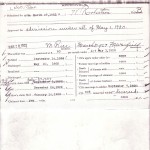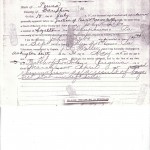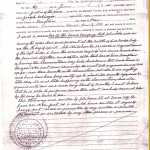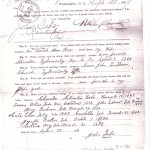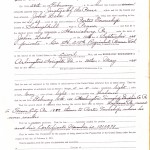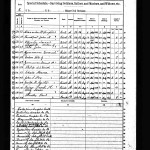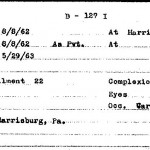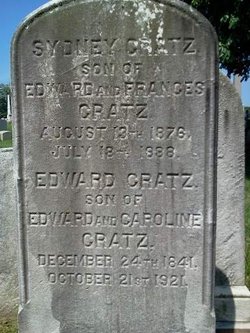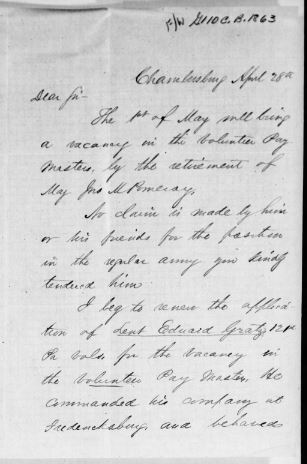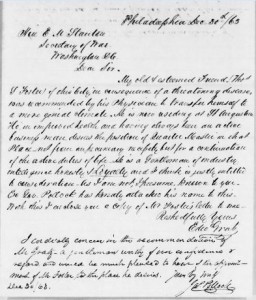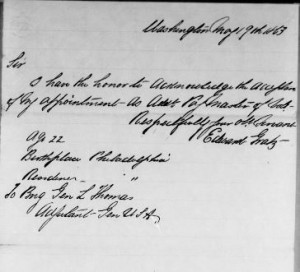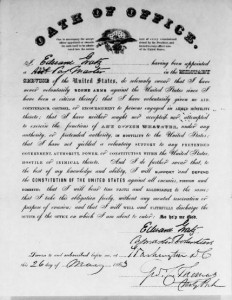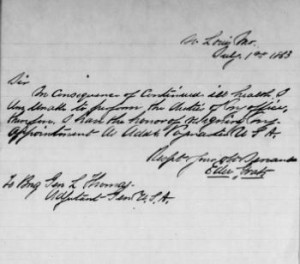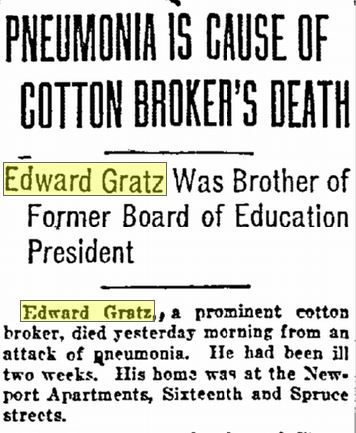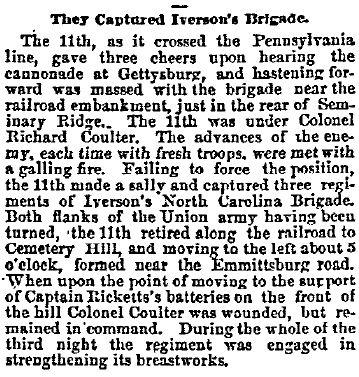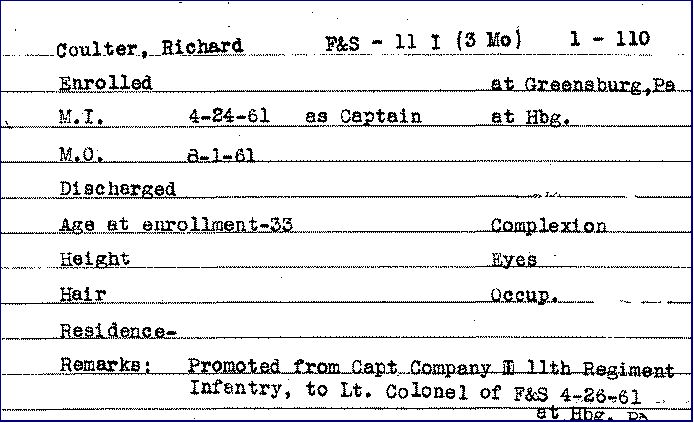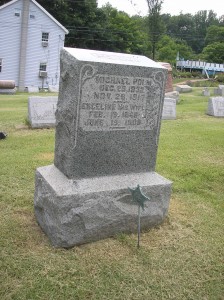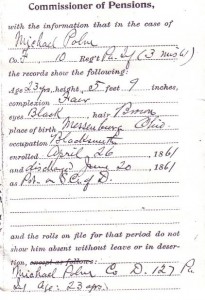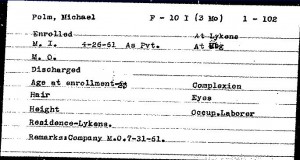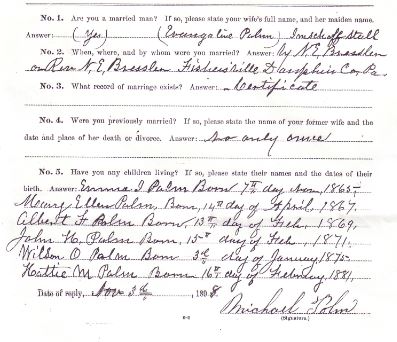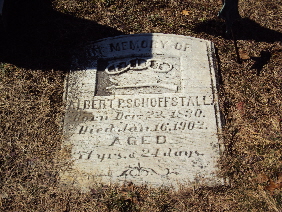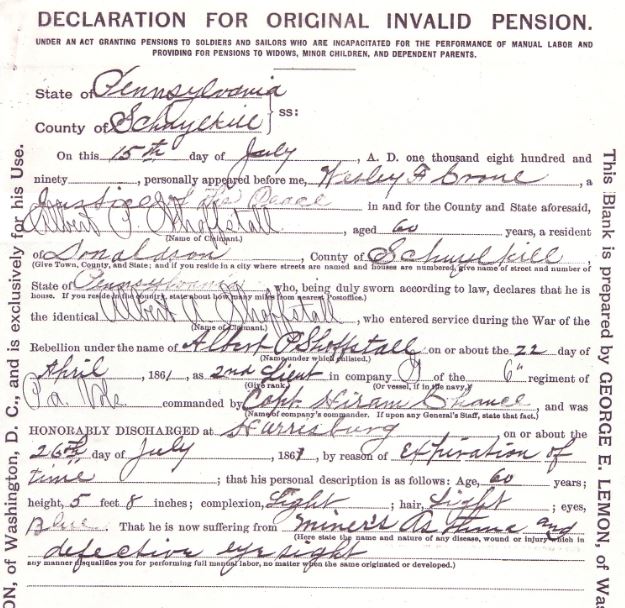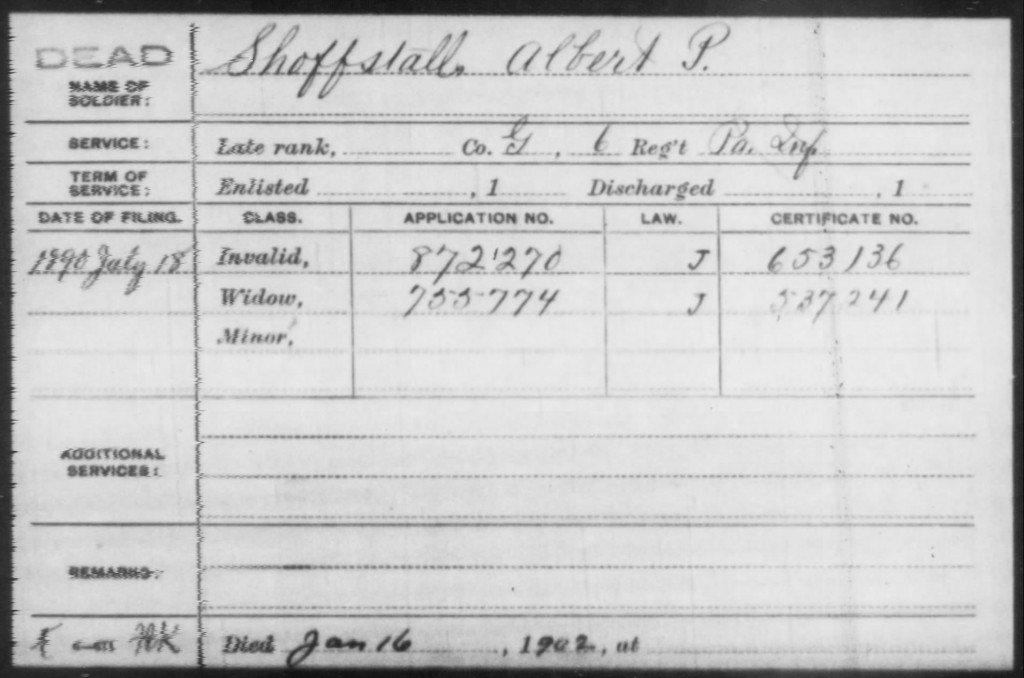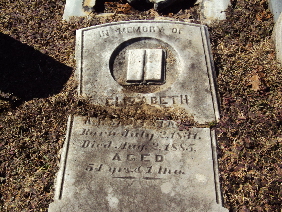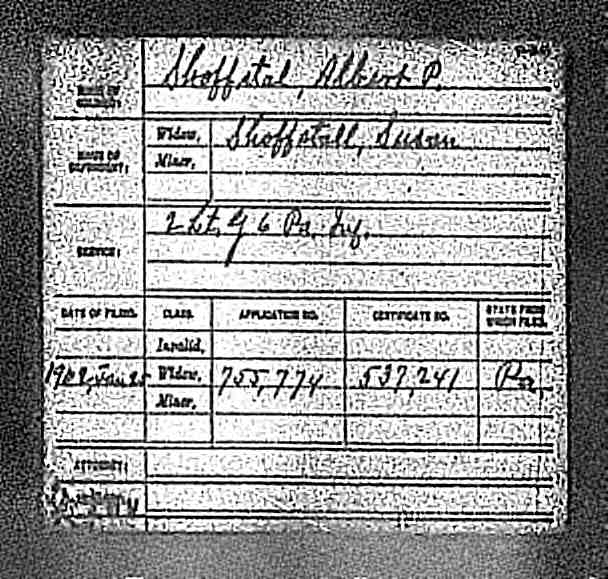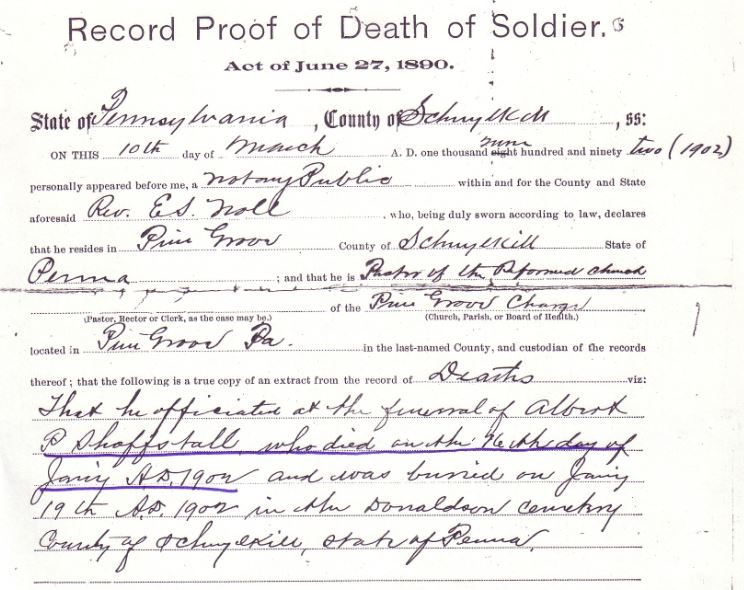Who Was John Lebo?
Posted By Norman Gasbarro on July 20, 2014
Because there were possibly six Pennsylvanian who served in the Civil War who had the name “John Lebo,” at least two of whom were from the geographical area of this Civil War Research Project, this post intends to summarize some of the known information about the two and present some information about the other four.
—————————-
John Lebo (1844-1922)
John Lebo was the son of Daniel Lebo (1812-1871) and Sarah [Schoffstall] Lebo (1824-1833). During the Civil War he served in the 210th Pennsylvania Infantry, Company H, as a Private from 16 September 1864 through 30 May 1865. He is associated with the Tower City, Schuylkill County, and Lykens Borough, Dauphin County, area of the Civil War Research Project. Prior blog posts which have included information about him are as follows: Tower City, Porter and Rush Township Civil War Veterans – Part 7 (mentioned on the Veterans’ Memorial in Tower City); They Served Honorably in Company H, 210th Pennsylvania Infantry (includes link to prior posts about John Lebo); Death of Joel B. Myers (attended funeral of fellow veteran from Lykens); Best of 2011 – Lykens G.A.R. Monument (named on this monument in Lykens); Tower City – Porter Township Centennial – Civil War Veterans List (named in list of vets from Tower City area).
Information not previously presented here includes a photo of his grave marker in Muir, Porter Township, Schuylkill County (not available at this time), and selected pages from his pension application file.
John Lebo applied for a pension on 29 July 1887, based only on his service in the 210th Pennsylvania Infantry, which he received and collected until his death. His widow, Sarah Ann [Row] Lebo applied for benefits on 16 January 1923 and collected until her death in 1927. Five available pages from the pension file are presented below. They describe some of the actions in which John Lebo was involved and his claim of disability as well as giving other interesting information about his life and service. Click on any of the thumbnails below to enlarge the document.
Pension Document #1
Pension Document #2
Pension Document #3
Pension Document #4
Pension Document #5
—————————–
John Lebo (1839-1887)
John Lebo was the son of Jonas Lebo (1811-1852) and Catharine [Shott] Lebo (1809-1859). During the Civil War he served in the 127th Pennsylvania Infantry, Company B, as a Private from 8 August 1862 through 29 May 1863. He is associated with the Halifax Township and Wayne Township, Dauphin County, area of the Civil War Research Project. Prior blog posts which have included information about him are as follows: Halifax Area Civil War Veterans; and, because he was married to Elizabeth Enders (1845-1903), a biography of him was included in Captain Enders Legion, previously reviewed on this blog. However, in that book, this John Lebo was erroneously identified with the the 210th Pennsylvania Infantry, not the 127th Pennsylvania Infantry in which he actually served. Also confusing the issue on this veteran is the fact that the Enders Family Genealogy, Volume 1, states that he “served throughout the Civil War.”
In 1890, when Elizabeth [Enders] Lebo was a widow, she reported to the census (shown below) that her husband had served in the 127th Pennsylvania Infantry However, the dates of service she gave were not correct according to other available information. The dates she gave were 1864-1865, not the dates found in the regimental records or in Bates.
1890 Veterans’ Census, Waynesville, Dauphin Co., PA.
The Pennsylvania Veterans’ Index Card from the Pennsylvania Archives, gives the dates of service as 8 August 1862 to 29 May 1863:
Pennsylvania Veterans’ Index Card, Pennsylvania Archives.
But further confusing the issue on this John Lebo is the fact that there was a second John Lebo, a John R. Lebo of Linglestown in the same regiment and company, with age about the same and serving for the same period of time in 1862-1863. That John R. Lebo was a different person as shown in the discussion of him below.
The Pension Index Card from Fold3 and from Ancestry.com (shown below) give the date of her application as 9 August 1890. She received the pension and collected it until her death in 1903. No record has been seen to indicate that her husband ever applied for a pension.
Pension Index Card from Fold3.
Pension Index Card from Ancestry.com.
Based on the above information, we have to rely on the widow’s knowledge of her husband’s service, the information in the widow’s pension application file (which has not yet been consulted), and the thoroughness in the checking of John Lebo‘s service by the pension officials, to establish that he had no other service and that he did not serve throughout the Civil War.

The grave of John Lebo (1839-1887) is found at Jacob’s United Method’s Church Cemetery, Waynesville, Dauphin County, Pennsylvania. Further information about this John Lebo and his family can be found at his Findagrave Memorial which is maintained by Russ Ottens, one of the authors of Captain Enders Legion.
——————————-
In addition to the two men named John Lebo, reported on above, the following other men with the same name have been found in Pennsylvania regiments:
John R. Lebo (c. 1842-1926)
John R. Lebo of Linglestown, a 20-year old coachmaker, enrolled in the 127th Pennsylvania Infantry, Company B, as a Private at Harrisburg, and was mustered into service on 8 August 1862 and served until honorably discharged on 29 May 1863. Following this service he enrolled in the 192nd Pennsylvania Infantry, Company C, as a Corporal and served from 14 February 1865 through 24 August 1865, when he was discharged with his company.
He was a different John Lebo than the other John Lebo (1839-1887) discussed above and the Enders family genealogists may have had him confused when they stated that their John Lebo had served throughout the war.
The confirmation that they were two different persons is found on the Pension Index Card for the John Lebo who died in 1926, available from Fold3:
Pension Index Card from Fold3.
The significant information is found at the bottom of the card where it is stated “not identical with 4565140… Lebo John, B 127….” Also noted on the card is that this John R. Lebo applied for a pension on 11 August 1892 and received it which he collected until his death in Mt. Pulaski, Illinois, on 17 June 1926, and his widow applied on 29 June 1926, which she collected until her death. Information available from the other Pension Index Card (not shown) from Ancestry.com is that the widow’s name was “Sarah M. Lebo” and she applied from Illinois.
—————————-
John Lebo (c. 1843 – ?)
John Lebo enrolled in the 200th Pennsylvania Infantry, Company F, as a Private, and was mustered into service at Harrisburg on 1 September 1864. The Bates record notes that he was not accounted for. The Register of Pennsylvania Volunteers available from the Pennsylvania Archives states that he was 21 years old at the time of his enrollment.
This John Lebo applied for a pension on 19 January 1886, which he received and collected until his death, whereupon his widow Sarah applied for benefits, which she received until her death. The Pension Bureau must have been satisfied that this John Lebo was accounted for and received an appropriate discharge, or they would not have awarded the original pension or the subsequent widow’s pension.
At this time, not much more is known about this John Lebo.
—————————-
John C. Lebo (c. 1843-?)
John C. Lebo (or possibly John G. Lebo) enrolled in the 56th Pennsylvania Infantry, Company I, as a Sergeant, at Culpepper, Virginia, and was mustered into service on 13 February 1864 at Culpepper. Bates reports that he was not on the muster out roll. At the time of John C. Lebo‘s enrollment, he was a resident of Clearfield County, Pennsylvania, was 21 years old, and was a clerk.
One confusing thing about John C. Lebo is that the Bates record states he was promoted to Sergeant on 25 February 1862, apparently during an earlier/first muster. The date and place of the first muster is unknown.
No record has been seen to indicate that this John C. Lebo applied for a pension. However, on 10 August 1869, his father, Jacob G. Lebo applied. This would seem to lead to the conclusion that John C. Lebo died in the war or died sometime prior to the date the father applied. In any event, the father did not receive pension benefits.
—————————
John G. Lebo (? – ?)
A person named John G. Lebo has been found in the Pennsylvania Archives‘ Veterans’ Card File. This John G. Lebo supposedly served in the 11th Pennsylvania Infantry, Company B, and was mustered out of service on 1 August 1861. The enrollment took place at Lock Haven, Pennsylvania, and the muster was at Harrisburg, with no muster date given. No Pension Index Card has been located for this John G. Lebo and his name does not appear in the Register of Pennsylvania Volunteers for that regiment and company. He has also not been located in any of the databases of Civil War soldiers.
It is possible that this is the same person as the John C. Lebo (above) and this was the first enlistment previously mentioned. There could have been a transfer to another regiment, with the records moving with him to the new regiment; but no evidence of that has been seen.
Consultation with more detailed regimental records as well as the above-mentioned father’s pension application may provide an answer.
—————————
Further information is sought on any of the above persons named John Lebo or on any other person of that name who was a Civil War veteran. Comments can be added to this post or sent by e-mail.
 ;
;
